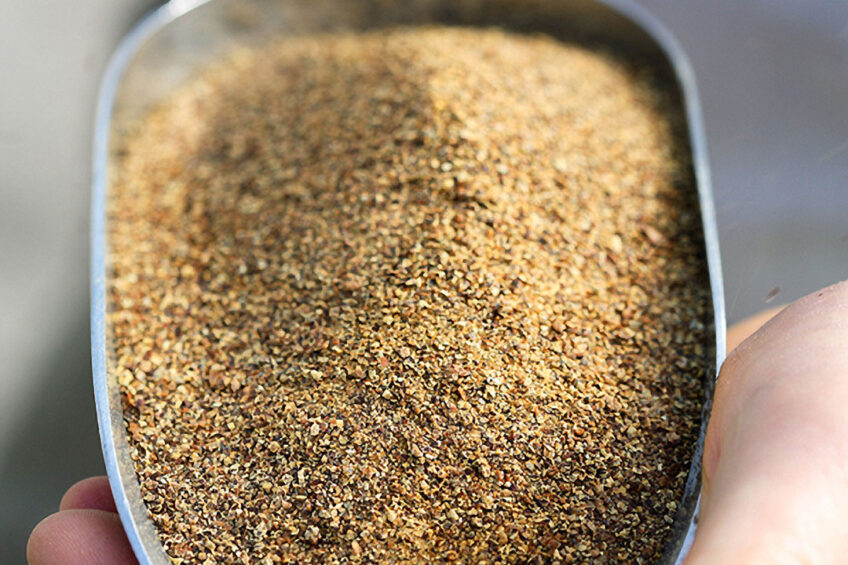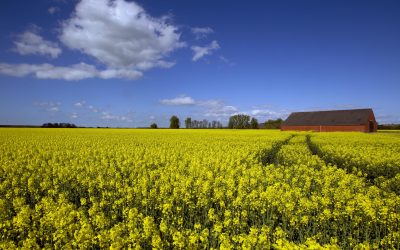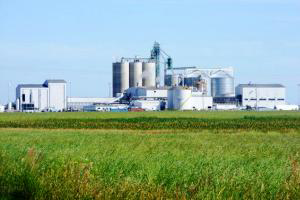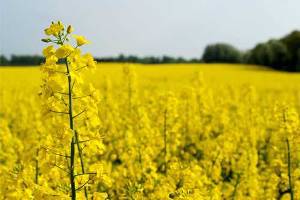The dynamics are changing for canola meal production in North America

As is the case with other feed ingredients, the global market dynamics for canola meal are always shifting and not always predictable. However, we do know that major changes can be expected in canola meal production in North America over the next 2 years due to changes in Canadian crushing capacity.
By roughly the end of 2025, domestic capacity will vastly increase due to plans for crush plant expansions in the province of Saskatchewan, including investments at 2 existing facilities (Louis Dreyfus Company and Richardson) and 3 new plants to be built by Viterra, Cargill, and Federated Co-operatives and AGT Foods. It’s expected that some additional capacity could come into operation within the next year or so.
“Leading up to this point, about half of Canadian canola seed production, about 10 million metric tonnes on average per year, was crushed here and the other half of our seed was exported for crushing to the USA, China, Mexico, Japan and a few other countries,” explains Brittany Wood, Canola Council of Canada (CCC) Director, Canola Utilization. “With additional crush capacity, exports of seed may go down.” By crushing most of Canadian canola seed in-country, the canola industry will shift to a value-added business model while still being dependent on exports for the movement of canola oil and meal to other markets.
The canola oil produced at these crushing plants will be used in food production and to manufacture renewable fuels. But most of the additional canola meal, which could equal over 3.5 MMT being produced at the new and expanded plants (once fully operational) will go into feed, including aquaculture feed, for domestic and foreign markets. However, Wood notes that various companies may also be investigating how to fractionate the high-quality protein in canola meal and develop different forms of it for inclusion in food products and specialty animal feed.
The additional crushing capacity is not expected to raise the acreage of Canadian canola…but everyone across the industry hopes that yield improvement will continue with growing agronomic knowledge and further breeding gains.
Brittany Wood, Canola Council of Canada (CCC) Director, Canola Utilization.
Canola production in Canada, which has been steadily increasing, is currently approximately 20 million tonnes per year. Yields have doubled in the last 20 years and by 2025, the industry has a goal through increased yields (52 bushels/acre at 22.7 kg/bu) to reach 26 million tonnes per year
Canola meal in feed
Before we look at how canola meal markets are shifting, let’s look at current feed uses. Thanks to the hard work of CCC staff, governmental personnel and others over many years, canola meal is well established in feed for many livestock species.
Dairy cows produce less enteric methane
In dairy cattle, according to the CCC, decades of research has shown that canola meal increases milk production by one litre per cow per day compared to diets containing meal from other protein sources such as soybean meal and cottonseed meal. “Canola meal has more rumen undegraded protein, or bypass protein, than many other common protein sources,” states the CCC. “That means…cows can use protein more efficiently and send less nutrients into the manure pile.” New research is also showing that canola meal results in milk with a higher protein content, an important advantage for cheese-making, “and cows are so efficient at using protein from canola that they produce less enteric methane.”
In September 2023, Wood authored a 12-page review with Dr Essi Evans called ‘Canola meal as a feed ingredient for lactating dairy cows’ which was published in the journal Advances in Dairy Research. This is intended to serve as a comprehensive guide to the use of canola meal and summarises the latest findings on palatability, protein and amino acid value, digestibility and energy, fatty acid composition and micronutrient profiles.
Nursery pigs perform exceptionally well
In pigs, the CCC notes that canola meal is an excellent protein source at all phases and for sows. One recent study showed that nursery pigs perform exceptionally well with diets containing high levels of canola meal. However, the use of canola meal in the huge US pig industry remains low as outside states such as Minnesota and North Dakota where canola is crushed, soybean meal is readily available and is cheaper than canola meal (no shipping costs).
Supports high levels of egg production
In poultry, canola meal is characterised by CCC as “an economical alternative to higher-cost ingredients, particularly in laying hens where it’s proven to support high levels of egg production.”
There is also very good existing uptake of Canadian canola meal in Chinese farming of carp and tilapia … and growth is expected there as well.
Brittany Wood, Canola Council of Canada (CCC) Director, Canola Utilization.
Canola meal’s amino acid profile is close to fishmeal
In aquaculture species requiring high amounts of protein, canola meal can displace fish meal at a fraction of the cost, says the CCC. “Canola meal’s amino acid profile is closer to fishmeal than any other common vegetable protein. It can be fed to salmon and trout, and it’s commonly used in diets for catfish, carp, tilapia, bass, perch, seabream, turbot and shrimp. Trials in Vietnam and China have demonstrated excellent performance when large amounts of canola meal were included in the diets of Pangasius catfish, snakehead fish and tilapia.”
New research in beef heifers
Researchers at the University of Saskatchewan and from industry investigated canola meal as a suitable protein source for young beef cattle and published their results in 2022.
In the 2-year study, low-oil dry distillers’ grains (a high-protein byproduct from the ethanol industry) was compared to canola meal as a protein supplement for beef cattle consuming low-quality forage. Researchers also wanted to determine whether the source of protein and the frequency of protein supplementation affected nutrient utilisation and the feeding behaviour of cattle.
Performance results were similar, but the researchers concluded that canola meal may well be more economically favourable than distillers’ grains. Canola meal protein was also degraded to a greater extent in the rumen in the study cows compared to low-oil dry distillers’ grain protein, resulting in higher levels of ruminal ammonia nitrogen.
Existing and new markets
The USA and China and domestic use are the main existing markets for Canadian canola meal, but some is occasionally exported to Thailand and Vietnam.
“Dairy production in California is our biggest market,” says Wood, “but we don’t anticipate much growth in the US dairy industry. We’ve been exporting canola meal from Canadian crushing plants to California for decades and to other top dairy-producing states as well.”
The Chinese dairy feed market, however, offers considerable growth potential. “The population growth in China is slowing, but it’s still growing and there is obviously a large population to start with,” notes Wood. “Demand for dairy products is really going up and China is looking to expand that industry. They want to diversify and strengthen protein food production. We’ve seen some growth over the last 5 years shipping meal to China for dairy production but we anticipate that we could see further growth. We continue to share new research results with nutritionists and other industry leaders there and in other Asian countries.”
There is also very good existing uptake of Canadian canola meal in Chinese farming of carp and tilapia, she notes, and growth is expected there as well. Canadian firms started exporting canola meal to China for aquaculture in significant amounts starting around 2014 and volumes have risen every year. In 2022, they reached 1.7 million tonnes.
“We also expect growth in the Thai and Vietnamese feed markets,” says Wood. “We’ve occasionally shipped meal to those countries and their feed industries are growing. We haven’t seen any exports of meal to Indonesia yet, but this is a potential market opportunity in the future.”











